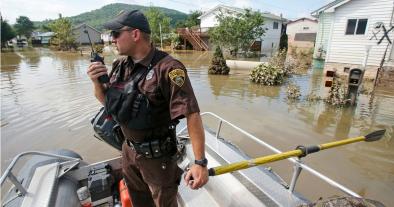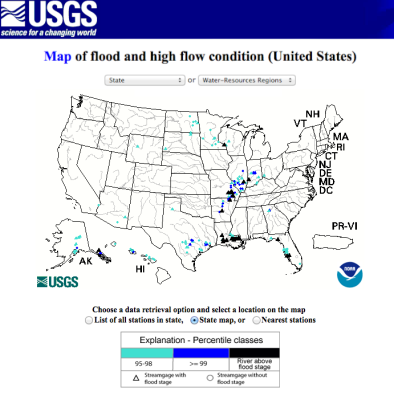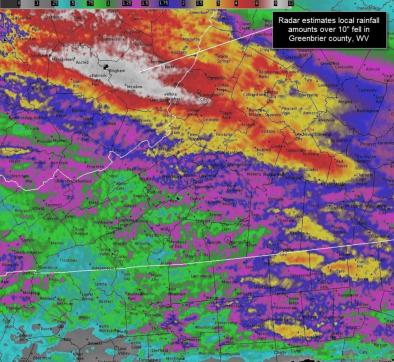Science Source
Climate of the weakly-forced yet high-impact convective storms throughout the Ohio River Valley and Mid-Atlantic United States
- States that the 1-in-1000-year precipitation event in late June 2016 over West Virginia caused tremendous flooding damage
- States that, like the 2012 mid-Atlantic derecho that blacked out much of the DC area, similar events can be traced to small, mid-tropospheric perturbations (MPs) embedded in the large-scale ridge pattern
- States that under this “weakly-forced” pattern, severe weather outbreaks commonly occur alongside eastward propagating MPs acting as a triggering mechanism for progressive mesoscale convective systems, which move across the central and eastern US. Forecasting of such weakly-forced yet severe weather events is difficult in both weather and climate timescales
- The present diagnostic analysis of the MP climatology is the first step toward developing metrics that can identify and evaluate weakly-forced severe weather outbreaks in multi-model projections
- Reports a discernable, potentially pronounced subseasonal change in the MP climatology associated with the changing climate of North America
- Finds that both sea surface temperatures within the Gulf of Mexico and mid-level high pressure over the central US were found to exhibit strong correlations with MPs
- Analysis of regional climate downscaling indicates a projected increase in MP frequency and the associated convective precipitation through the mid twenty-first century
Related Content
Science Source
| Borealis Scientific in Anchorage, Weather Underground
Heavy Rainfall Trends in the US
Brian Brettschneider
Headline

Jul 28, 2016 | ThinkProgress
Flood Experts Are Having To Throw Out The Playbook As The Planet Heats Up
Real Time Data

Jul 28, 2016 | United States Geological Survey
US Daily Flood and High Flow Conditions
Headline

Jul 11, 2016 | Charleston Gazette-Mail
Climate change makes flood more likely, more damaging, experts say


